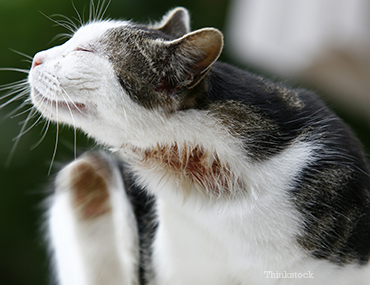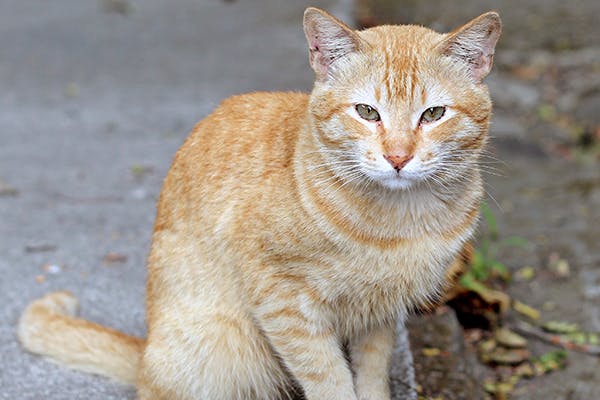You would often see stray dogs and cats hairless and with irritated skin. The cause behind such terrible sight are mites, and we can say that they are afflicted by mange. When a cat suffers from mange, they are in a pitiful state. You would never see them itchier than they are in this state. Although dogs are more susceptible to this skin disease, mange can also infect cats.
You must be wondering if you should be alarmed or not, right? Well, mange isn’t common in cats, but you still would not want it to happen to your cat. As a pet owner, it is your responsibility to take the best care of your cat, and that is what you signed up for when you took them up as your companion. You don’t have to fret over it; it’s not as hard it seems.
So, if your kitty has got mange or you have picked a poor one from the streets already suffering from it, you might have no clue what to do about it. Well, we are here to help. Here is everything you need to know about the mange and what you can do to treat and avoid the mite infestations. Let’s delve into the details of the disease.
What is mange

First, you have to know what mange is. It is a skin condition in which animals (rarely humans) suffer from hair loss and itching. It is due to mite infestation, which people commonly refer to as mange. Technically, mange is a collection of skin diseases caused by mites. Scabies Sarcoptes and Demodex cati afflict mange in cats in most cases. People call them the red and black mange, respectively.
Different types of mange
Here are the different forms of mange that can affect your cat.
1)Demodex cati or Black mange: You will find the mite Demodex cati on almost every cat. However, it is not as problematic as you might think it to be. The mite can cause mange if the cat has a compromising immune system, which is more likely to happen in kittens and older cats. In that case, the pet’s body cannot control the population of these mites, and in turn, Demodex overgrows to cause itching and loss of hair.
2)Scabies Sarcoptes or black mange: This one is less observable in cats than the Demodex mites. People commonly refer to it as black mange. You can find this mite infesting wildlife, cats, and other animals. Also, it is highly contagious. If you put the two together, your cat comes close to a wild animal; it can get black mange. So, a cat living in outdoor colonies is more susceptible than the one that stays inside. Moreover, Scabies affects humans, and it is a concern for us, as well.
3)Cheyletiella or walking dandruff: This type of mite rests outside the skin, contrary to the previous two counterparts. The common name of this mite is walking dandruff because of such appearances on the fur of the cat. Usually, it is a problem for rabbits, but it can affect cats, as well. The good news is that this mite dies out quickly as the skin surface is not the best breeding place.
4)Otodectes cynotis or ear mites: Ear mites, guessable from the name, infest the ears and cause itching and discomfort in the ear. Furthermore, the growing bacteria in the ear can worsen the situation. People call this type of mange otodectic.
Symptoms of mange in cats

Let’s talk about what the mange looks like on a cat. For starters, the condition of the affected cat seems like any other flea infestation. The common signs to look for are itching, discomfort, swelling, and hair loss. Moreover, the cat might start to lick more than usual. Other symptoms include skin redness and dryness.
When the mites infest the cat, they take their time to show the signs. It usually takes about a week until the skin problems become visible. If you don’t go ahead with the treatment, the situation worsens, and the pet becomes irritable and restless.
Causes of mange
The reason your pet cat has mange is that the condition is contagious. This means that if your kitty has been around another stray cat or some other animal, they are more likely to get mange. Cats become more susceptible if they are immunocompromised. Usually, cats in their old age and kittens have an imperfect immune system.
How is mange diagnosed?

Although you can see mange for yourself when the cat scratches their body a lot more than before, however, that part happens days after the mite infestation, ideally, it would help if you took your pet to the vet, who will look for the mites under the microscope.
The vet will find Demodex and Scabies on the skin, whereas they will take out the ear mites with a cotton swab. If you get a chance to look at the micrographs, you will see that the Demodex has a cigar-like shape, while other mites are oval.
Treatment of mange in cats
Treatment starts after your cat’s vet has diagnosed the mange. The treatment depends on the type of mite infestation. In most cases, vets advise an anti-parasitic treatment for your cat. Usually, an antibiotic shampoo and thorough cleaning do the job of getting rid of the mite. However, some feline partners don’t like water at all. In that case, the vet will prescribe an ointment or a tablet to treat the mange.
Conclusion
Let’s summarize what we have discussed thus far. You don’t have to worry about your cat getting mange if you keep a clean environment and keep them away from other animals. But if your kitty does get infested, you don’t need to fret over it.
You have to take your furry buddy to the vet immediately. After diagnosis, the doc will prescribe an antibiotic or anti-inflammatory shampoo, ointment, or tablet, which will kill the mites, and you will have your kitty back healthy and happy.
